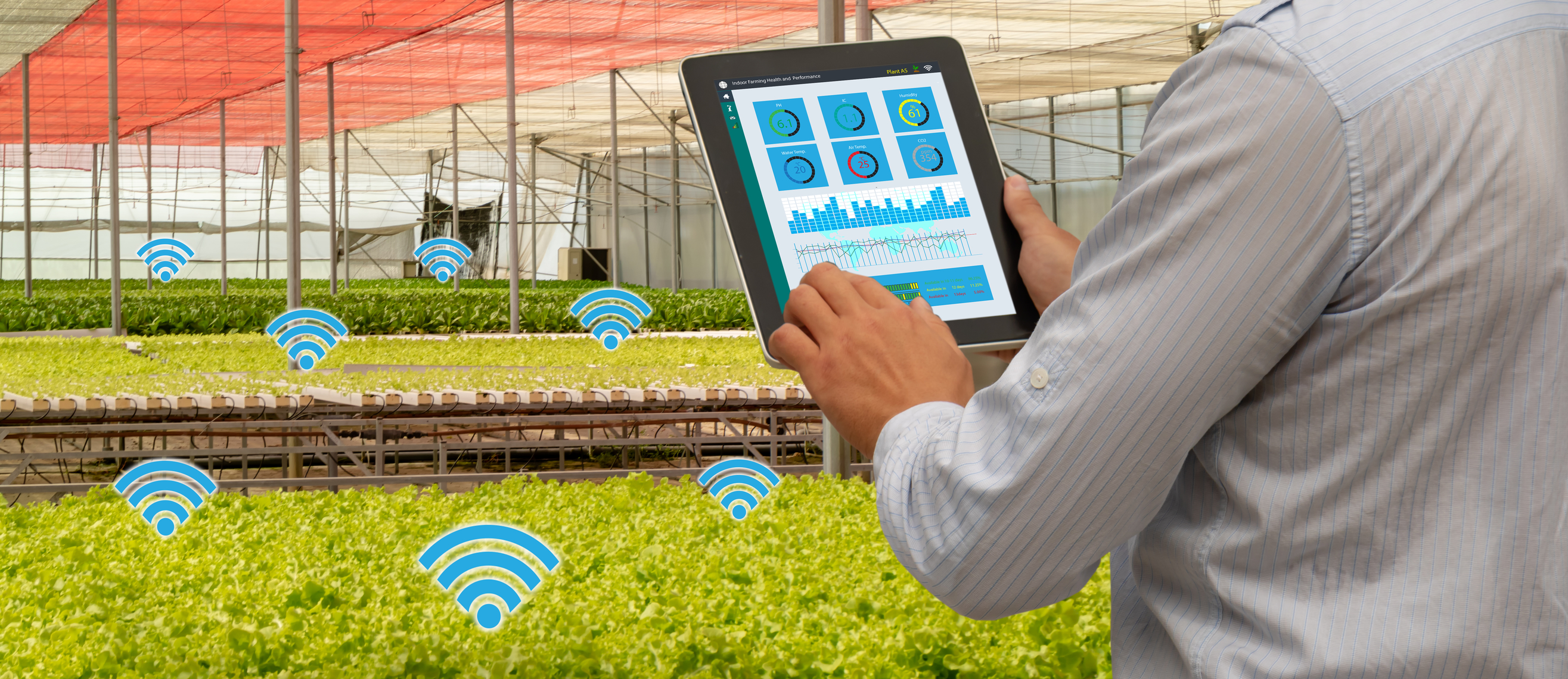
Approximately one in six people get sick, 128,000 are hospitalized, and 3,000 actually die each year from food-related illnesses. In response to these alarming statistics, the FDA introduced the Food Safety Modernization Act (FSMA) in 2011. The legislation was a major overhaul to the country’s food safety framework, placing new regulations on producers and suppliers throughout the entire food supply chain.
Compliance with many of these regulations is easier with the use of technology—specifically IoT food safety technology. The deployment of IoT in the food supply chain goes beyond compliance, helping food producers, suppliers, and restaurant operators increase efficiencies and save money, while also improving food safety for consumers.
How IoT technology improves food safety
Temperature and humidity monitoring
The FDA provides guidelines for temperatures in its Hazard Analysis Critical Control Point (HACCP) food safety management system. IoT technology makes compliance with these guidelines much easier.
IoT sensors monitor and record temperature and humidity. These sensors can be used throughout the food supply chain, from large food storage facilities to smaller shelves or display cases in restaurants and food retailers. Real-time monitoring triggers an alert if temperatures fall outside of a predetermined acceptable range, so problems can be addressed immediately.
Recall prevention
Many of us have thrown away a bag of spinach or a pack of deli meat or even dumped a carton of milk down the drain due to a food recall. However, many of these recalls could have been avoided if the proper IoT technology had been in place.
The combination of biosensors to detect pathogens in food with temperature and other environmental sensors can raise a red flag when a problem may be present. Track how long an item was in transit or if a package was accidentally ripped open. You can even track how well your employees wash their hands to prevent humans from contributing to recall issues. Contaminated food items can be identified at the point of origin, before they make it out into the local grocery store.
When a recall does arise, IoT technology also speeds up the process of identifying the affected products. RFID tags trace food throughout the supply chain, making it easy to quickly identify impacted production fields, stores, and restaurants. Recalls can then be handled more quickly and efficiently, significantly reducing the number of people impacted. With the average food recall costing $10 million, it is most certainly worth the investment in IoT to reduce their occurrence.
Transport and handling monitoring
It is not enough to monitor food once it is in your warehouse, store, or restaurant. You also need to know how it was handled from the point of origin and throughout its journey. IoT sensors, RFID tags, and GPS sensors work together to create a map of where food items are and how they are being handled.
An automated temperature monitoring system notifies you if a truck breaks down and the food inside thaws out. GPS sensors let you know if a shipment is delayed. IoT sensors can also identify if a package was opened or mishandled. This data paints a full picture of food quality and safety before it arrives on your premises.
The added benefits of IoT for food companies and restaurants
Operational efficiencies
The combination of RFID tags with GPS sensors let food suppliers, producers, and retailers track food throughout the journey from farm to store or warehouse. Inefficiencies in transportation logistics can be identified and corrected, improving the overall supply chain.
For example, you may discover the way food is being stored and loaded for transport jeopardizes the required temperature regulation of certain items. Rearranging how food is stored and the order in which it is loaded can correct this issue.
Equipment in food retail stores, warehouses, and restaurants can be monitored for efficiency. Identify if your freezers in one location are set too cold and adjust accordingly, saving you money on energy and preventing frozen foods from getting freezer burn.
Predictive maintenance
IoT sensors monitor all types of equipment for asset health. The ability to fix an issue when it is small causes minimal disruption to the workflow and saves money when it comes to repairs. IoT devices can also predict when a piece of equipment may be near the end of its life, so you have time to plan for a replacement rather than making an emergency purchase.
Inventory management
IoT devices let you track your inventory in real time. This is particularly useful for perishable items, so you can maintain a fresh supply of these goods while reducing waste.
Quickly identify spoiled products and discard them, and optimize restocking of perishable items, so you always have the ideal amount of fresh items on hand. Once you place an order, you can also use IoT to track the items throughout delivery, making sure they are handled properly and kept at the right temperature.
Restaurant management
Running a restaurant is a 24/7 job, but you can’t always be there. IoT opens the door for remote management of equipment, inventory, and more.
Data can be sent to managers and owners through a food safety app, to monitor the temperature of food warming stations and freezers, real-time inventory stats, and more. Remote management is especially useful for individuals running a chain of restaurants or retail locations. Being able to identify a specific problem at one location without having to physically be in the store can save you a lot of money and aggravation.
Introducing IoT into a restaurant environment carries with it the responsibility to ensure that all IoT devices are secure and communicate securely with the restaurant’s network. IoT devices are a common attack vector when not designed and built properly. A recent article on weaknesses in hotel companies when it comes to IoT is a great read, as there are many parallels with the foodservice industry, particularly when it comes to restaurants and the data passing through on an hourly basis.
Reputation management
A recall or even just one incident of a foodborne illness at your establishment causes massive damage to your reputation. In addition to the immediate costs of dealing with the issue, you also have to contend with lost future sales, compliance penalties, and potential lawsuits. When you can take proactive measures to improve food safety, you reduce your risk for safety issues and protect your brand and reputation.
Cost savings
All of the above benefits impact the bottom line. A more efficient supply chain, less waste, improved equipment maintenance, remote monitoring, and better inventory management save money. Of course the protection to your reputation also adds to the bottom line through steady sales and loyal customers.
Food producers, suppliers, retailers, and restaurants must take every precaution possible when it comes to improving food safety. IoT technology is a powerful tool that improves food safety, saves your business money, improves efficiencies, and reduces waste—all while contributing to a strong brand reputation in the market. For more information on how your business can benefit from IoT technology, consult experts in the field who have experience in the food industry.

